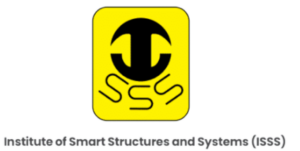University Gustave Eiffel, France
Smart Processing with Wearable Devices: Shall We Consider the Human Influence?
Wearable devices embed inertial sensors whose records are processed for navigation instructions, health assessment, sports training or change in mobility behaviour. The applications are processing inertial or telecommunication signals sensed in our clothes, shoes and glasses. Complex methods, more and more based on artificial intelligence, are developed to process these data but they sometimes forget that human behaviour defies the developed methods.
Defining the minimum performance requirements for a targeted application, calibrating embedded sensors and accounting for the hardware constraints of the wearables are classical R&D steps. The influence that humans can have on the quality of measurements (signal attenuation by the human body, change of behaviour, ageing, etc.) is however often forgotten.
In this presentation, we will analyse the observability of gait parameters and navigation data with signals sensed by devices worn on different body parts (upper/lower body). We will also observe the human gait variation for the same person in different kinematic contexts (visually impaired people guided by a cane or a dog). The analysis will be supported by a theoretical and experimental approach with inertial signals and GNSS phase and pseudo-ranges data collected by pedestrians.
Istituto Italiano di Tecnologia (IIT), Italy
Peripersonal space and margin of safety around the body: learning visuo-tactile associations in a humanoid robot with artificial skin
In this talk I discuss the development of a large area electronic skin and its application to create a biologically motivated model of peripersonal space in a humanoid robot. Guided by the present understanding of the neurophysiology of the fronto-parietal system, we developed a computational model inspired by the receptive fields of polymodal neurons identified, for example, in brain areas F4 and VIP. The experiments on the iCub humanoid robot show that the peripersonal space representation i) can be learned efficiently and in real-time via a simple interaction between the robot and the environment, ii) can lead to the generation of behaviors like avoidance and reaching, and iii) can contribute to the understanding the biological principle of motor equivalence. More specifically, with respect to i) the present model contributes to hypothesizing a learning mechanisms for peripersonal space. In relation to point ii) we show how a relatively simple controller can exploit the learned receptive fields to generate either avoidance or reaching of an incoming stimulus and for iii) we show how the robot can select arbitrary body parts as the controlled end-point of an avoidance or reaching movement.
Indian Institute of Science, Bangalore
Towards Smart Bio-Chemical Sensing Platforms
Multiplexed sensing platforms will be the key enablers
of smart electronic systems of the future. Such platforms
will require the integration of miniaturized sensor arrays at the
system/chip level, using heterogeneous technologies.
While we have made substantial progress in vision, tactile
and auditory sensing applications, an equivalent of Moore’s law
is missing in biological and chemical sensing applications.
With phenomenal advances in semiconductor nanotechnology and
printed/flexible electronics, the stage is now set for a new wave of
sensor systems to be equipped with massive sensory functions,
specifically with biological and chemical sensor arrays.
In this talk, I will present two case studies from our research:
(i) Biosensor systems for point of care diagnostics : the story of managing
the sensing of multiple analytes in blood and urine with an eventual goal
to realize “Lab on Palm”
(ii) Gas sensor systems for environmental monitoring, breath analysis and
hazardous gas leakage detection, with an eventual goal to realize the
“Electronic Nose”
With this backdrop, I will end my talk with some thoughts on future
challenges in achieving highly complex and intelligent nanoscale
sensory systems.
Tyndall National Institute, Ireland
Micro Sensor Systems for the Future Internet of Everything (IoE)
The Internet of Everything (IoE) has been described as “the networked connections between devices, people, processes and data” and it has been widely predicted that, by 2025, the IoE will exceed 100 billion connected devices, each attached to at least 10 sensors collecting data. This is anticipated to result in a one trillion-sensor economy driving a digital revolution in data with market reports estimating that the IoE will generate alsmot $20 trillion of newly created value.
This digital transformation, the beginning of which we are already experiencing, is expected to dramatically enhance the health and well-being of the global population as well as the sustainability of our planet, encompassing both our built and natural environments. This vision of the IoE has the potential to enhance the management of our core local and global infrastructures and ecosystems and enable personal health, and well-being as well as global sustainability encompassing food production, air and water quality, energy, communications, transport and security.
This talk will present some of the state-of-the-art research being undertaken at Tyndall National Institute, University College Cork, Ireland in the “making and powering of the smart things” that will make up this future Internet of Everything. These smart things, or intelligent autonomous wireless sensor nodes, typically comprise multiple sensors, signal and data processing, some form of actuation, wireless communication and a power source.
To illustrate the range of technologies that need to be considered, a number of representative case studies will be presented that address applications including precision agriculture and environmental monitoring, bio-pharma processing, medical devices addressing in-the-body diagnostics and therapeutics, wearable electronics for health and well-being as well as interfacing with robotics in advanced manufacturing. The need for energy harvesting or scavenging platforms will also be presented as an alternative, or complimentary technology to batteries. The concept of sustainable or compostable electronics will be introduced as a future direction for consideration, Finally, the talk will introduce opportunities and challenges of using Artificial Intelligence to enable intelligence at the “Edge of the Edge” of the IOE.






